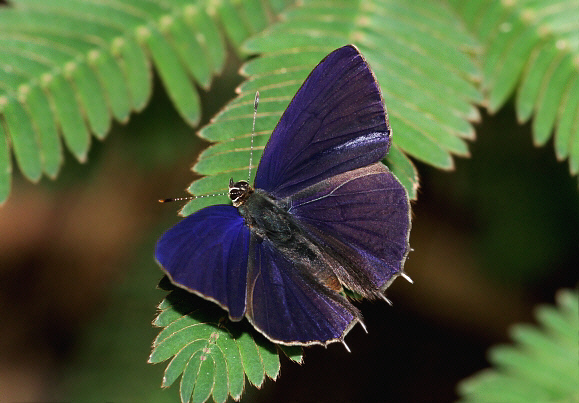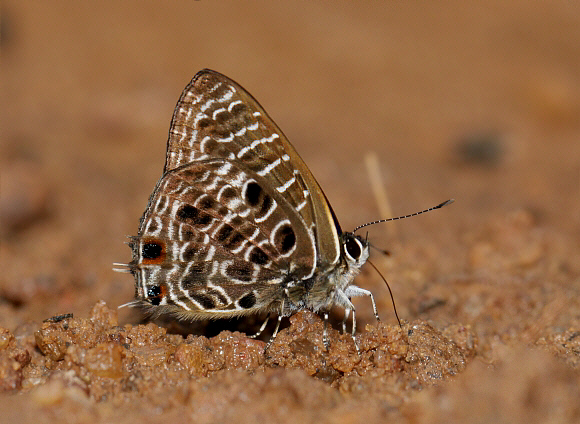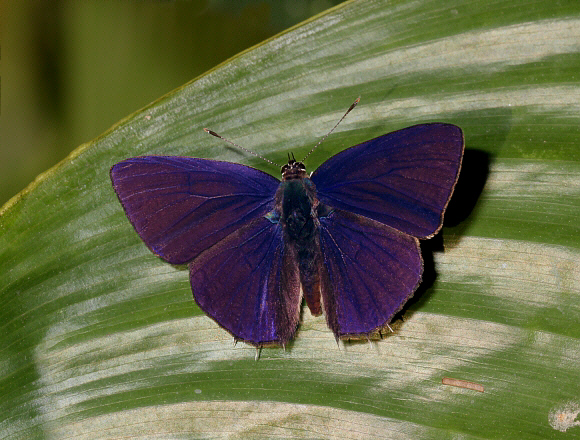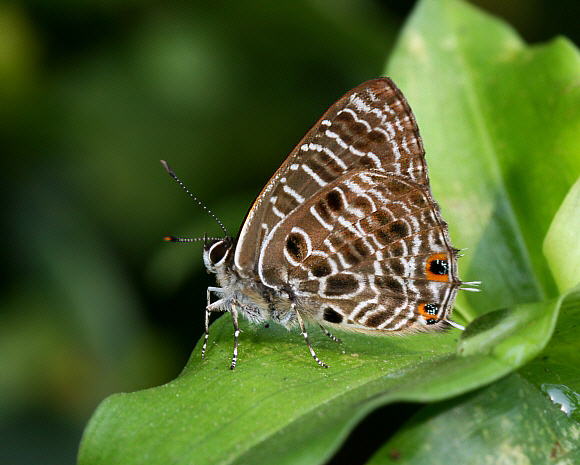
Introduction
The genus Anthene comprises of about 132 species. It includes the subgenera Neurellipes, Triclema, and Neurypexina, although some workers treat these as distinct genera. The genus is centred on the Afrotropical region where there are 123 species. There are also 8 species found in south-east Asia and 1 species which is endemic to Australia.
All Anthene species have three short tails on the hindwing. The uppersides of most species are dark brown, with the males having an indigo or violet sheen. In some species however both sexes have bright metallic orange uppersides with dark brown borders. The undersides are quite variable, e.g. rubricinctus is plain brown with light markings, lachares has a contrasty irregular zebra-like pattern of dark brown and white, larydas is marbled in shades of brown and white, and liodes is white with faint maculae. One characteristic shared by all species however is the group of 2 or 3 tornal spots. These are black, studded with blue scales, and almost enclosed by an orange crescent.
Anthene larydas is found from the Gambia to western Kenya.

Habitats
This species is found in relatively open rainforest habitats including along roadsides and the edges of wide trails, and penetrates into the savannah zone where there are patches of forest alongside rivers or streams.

Lifecycle
The caterpillars feed on Acacia, Albizia, Dichrostachys (Fabaceae), and Hypericum (Clusiaceae). They are frequently attended by Crematogaster, Pheidole, and Camponotus ants which milk them to obtain sugary substances exuded from a dorsal gland. The relationship is mutually beneficial as the presence of ants deters predatory or parasitic wasps and flies.
Adult behaviour
The adults are usually found in quite large numbers – it is not uncommon to find 50 or more males of this species imbibing mineralised moisture from patches of damp ground on hot sunny days.
Males perch on low foliage to await passing females. They hold their wings erect in sunny weather but bask with wings half open or fully open in hazy or cloudy conditions. Females are normally seen either basking on the foliage of bushes, or nectaring at flowers.

